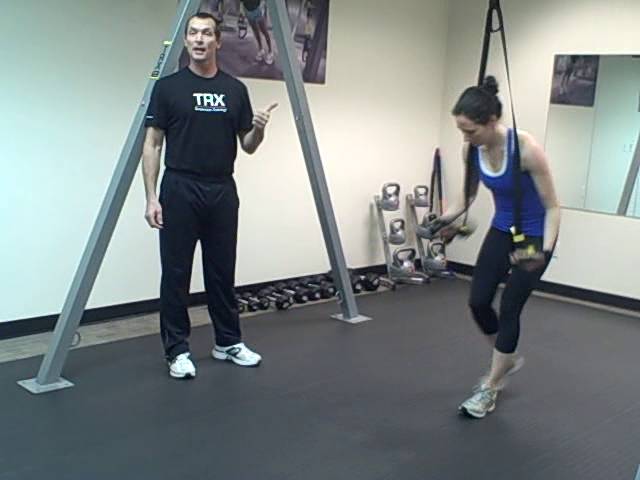Rotator cuff tears are among the most common conditions affecting the shoulder. In 2010, close to two million people in the United States went to their doctors because of a rotator cuff problem. In this Ask the Doctor, Dr. Perkash addresses a question posed by a member of the TRX Community who was diagnosed with a possible rotator cuff tear.
Question:
In 2007, after working out three times a week with a personal trainer who emphasized heavy weight lifting, I developed severe shoulder pain and was diagnosed with a "possible" torn rotator cuff. After two cortisone injections in two years, I have been pain free. I have given up the weights for bands. Would TRX aggravate this condition, or are there specific exercises I could use for continuing rehab?
Answer:
The rotator cuff is a combination of four muscles in the shoulder: the supraspinatus, infraspinatus, subscapularis and teres minor. The function of the rotator cuff is to stabilize and move the shoulder joint, which is a ball (the humerus) and socket (the glenoid) joint. These muscles and others are responsible for movement of the entire shoulder girdle, which includes the shoulder blade (scapula) and the clavicle.
Injuries to the rotator cuff are quite common, both with aging and with exercise and activities. Athletes who perform overhead activities such as those participating in football, baseball, tennis, weightlifting, volleyball and water polo are particularly susceptible to rotator cuff injuries. The rotator cuff can be injured due to a strain injury or trauma, or it can become inflamed due to chronic overuse such as with swimming or other repetitive motions of the shoulder. With aging, degeneration of the joints in the shoulder or formation of bone spurs can predispose to rotator cuff injuries. Degenerative changes can also occur in the nearby acromioclavicular joint, which can also cause shoulder pain.
Diagnosis of rotator cuff injuries is usually clinical initially, but x-rays can show bone spurs and degenerative changes in the shoulder joints, and and MRI scan can reveal a potential rotator cuff tear. Treatment usually involves rest, ice, anti-inflammatory medications, physical therapy and rehabilitation exercises, cortisone injections and less commonly surgery to repair a significant rotator cuff tear. Small or partial tears can usually heal themselves with appropriate treatment, but full thickness tears usually do not heal and often require surgery to repair the rotator cuff.
In someone who has had complete resolution of symptoms of a "possible" tear, the prognosis is quite good long term with appropriate rehabilitation and preventative measures. Overhead activities with heavy weights such as military press place the shoulder in a relatively unstable position and should be performed with caution, or only light weights should be used. Strengthening of the rotator cuff and shoulder girdle musculature can markedly reduce the risk of injury in the future. If the shoulder pain symptoms have completely resolved, there may not be any specific restrictions that are necessary. Anyone with a prior injury to the rotator cuff should clarify with his physician whether he needs to follow any specific restrictions given his individual situation. Check with your physician whether you have any specific restrictions with regard to your shoulder condition.
The TRX Suspension Trainer is an excellent tool for strengthening the rotator cuff, improving functioning and performance and decreasing the likelihood of future injury. The following exercises are excellent for the ongoing rehabilitation of a previous rotator cuff injury and stabilize the shoulder girdle:
- TRX Shoulder Series
- TRX Swimmer Pull
- TRX Biceps Curl
- TRX Chest Press
- TRX High Row
Another good exercise for shoulder stability is the TRX Serratus Slide. Again, it is important to take guidance from your physician and physical therapist regarding exercise selection for your specific situation.
For more on how TRX Suspension Training bodyweight exercise is a safe, scalable and effective solution for you or your patients, visit our Sports Medicine page.
NOTE: Any medical information in this blog is of a general nature and not a substitute for the advice of a medical professional. If you need medical advice, see a doctor.



